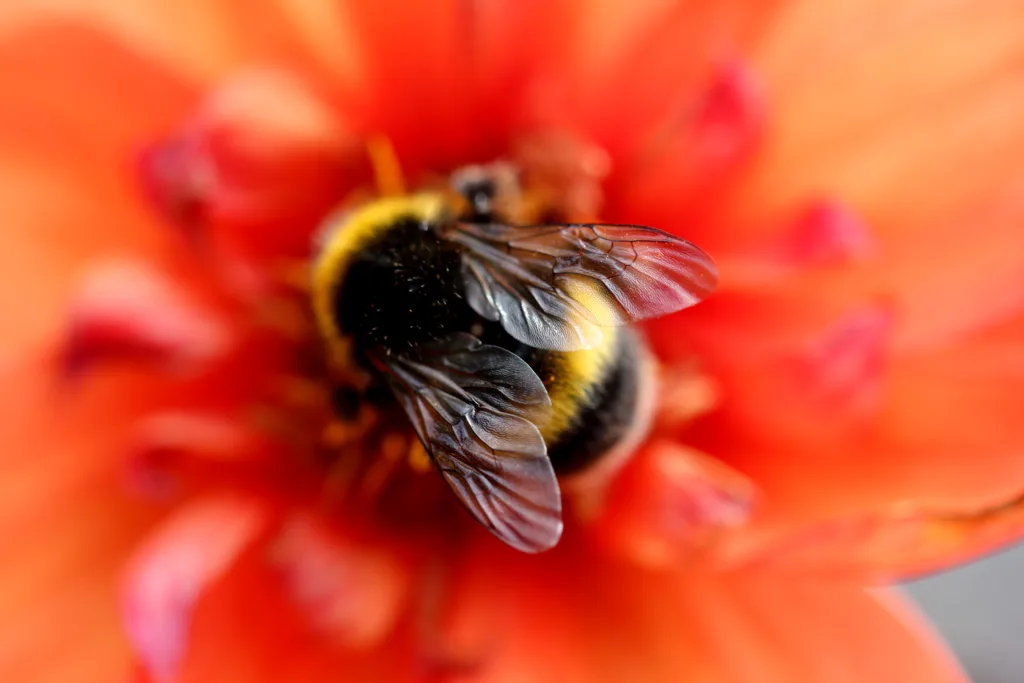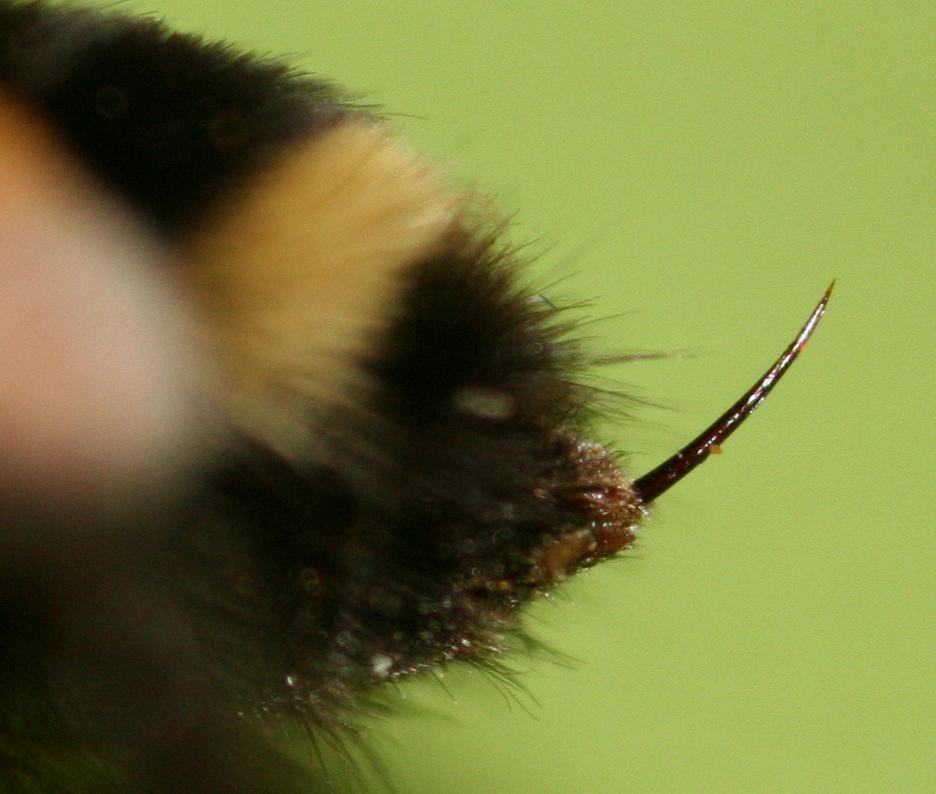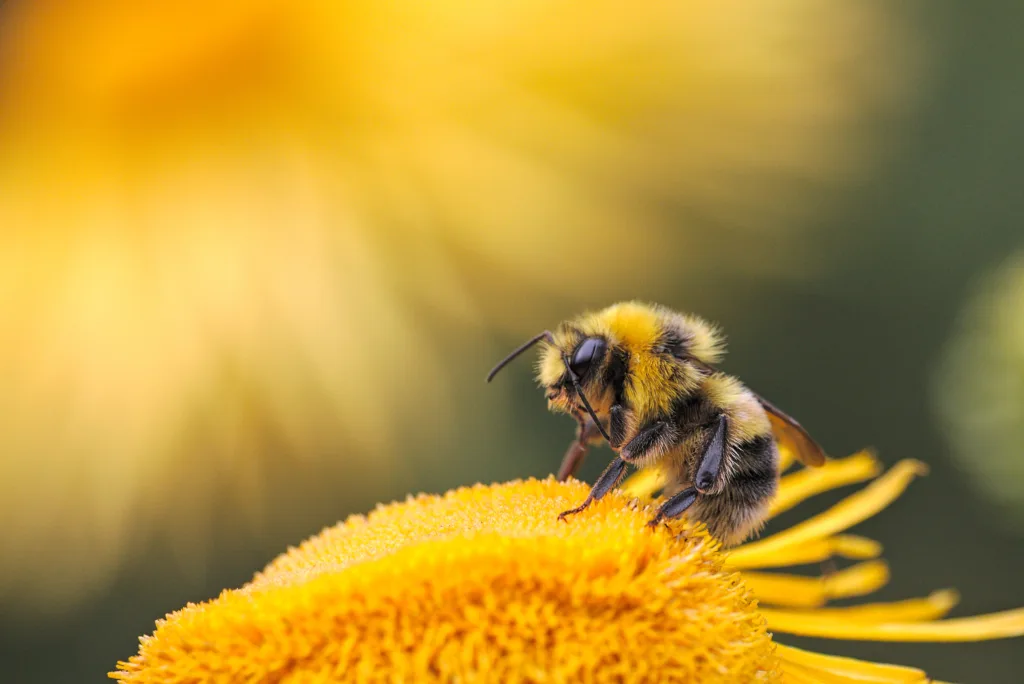Bumblebees are fascinating creatures that play an important role in pollinating plants and crops. They are known for their fuzzy appearance and their ability to fly despite their large, bulky bodies. One question that often arises when it cmes to bumblebees is whether or not they die after stinging. In this blog post, we will explore the answer to this question and provide some additional information about these amazing insects.
First, let’s address the question at hand: do bumblebees die after they sting? The answer is no. Unlike honey bees, bumblebees do not have barbed stingers that become lodged in the skin of their target. This means that they are able to sting multiple times without suffering any harm. Bumblebees are not typically aggressive and will only sting if they feel threatened or provoked. However, even if they do sting, they will not die as a result.
So, why do honey bees die after they sting while bumblebees do not? The answer lies in the design of their stingers. Honey bee stingers have barbs that dig into the skin of their target, allowing the bee to inject its venom. However, when the bee tries to fly away, the stinger is ripped from its body, causing fatal damage. Bumblebee stingers, on the other hand, are smooth and do not have barbs. This means that they can easily retract their stinger without causing any harm to themselves.
While bumblebee stings are not typically dangerous to humans, they can still be painful. The venom injected by the bee can cause a range of reactions, from mild discomfort to an allergic reaction. If you are stung by a bumblebee, it’s important to remove the stinger as soon as possible and clean the affected area with soap and water. Applying a cold compress can also help to reduce swelling and pain.
In addition to their stinging ability, bumblebees are also known for their important role in pollinating plants. They are able to fly at lower temperatures than honey bees, making them essential pollinators for crops that bloom early in the season. Bumblebees are also able to “buzz” pollinate, which involves vibrating their bodies to release pollen from flowers that are difficult to access. This unique pollination technique makes them valuable contributors to the ecosystem.
Bumblebees do not die after they sting. Unlike honey bees, their stingers do not have barbs, allowing them to retract their stinger without causing harm to themselves. While bumblebee stings can be painful, they are not typically dangerous. These amazing insects play an important role in pollinating plants and crops and are an essential part of our ecosystem.
The Fate of Bumble Bees After Stinging
When a bumble bee stings, it does not die unlike honey bees. Bumble bees have a smooth stinger, which means it is not barbed like that of a honey bee’s. Therefore, bumble bees can sting multiple times without the stinger gettng stuck in the skin of a predator or enemy. After stinging, the bumble bee will fly away as if nothing happened. However, it is worth noting that bumble bees are generally not aggressive and will only sting if they feel threatened or if their colony is in danger. Furthermore, bumble bee stings are usually less painful than honey bee stings due to the lower amount of venom injected. If you happen to be stung by a bumble bee, it is recommended to remove the stinger and apply a cold compress to reduce swelling and pain.

Do Bees Understand the Consequences of Stinging?
Honey bees do not have the cognitive ability to understand that their sting will result in their own death. In fact, they sting as a means of self-defense or to protect their hive from predators. When a honey bee stings a mammal, such as a human, their barbed stinger becomes lodged in the skin, causing the bee’s abdomen to tear away from the rest of its body. This detachment ultimately results in the bee’s death.
While bees are known for their complex communication and social behavior within their hives, they do not possess the same level of consciousness as humans or other mammals. Therefore, it is unlikey that they are aware of the consequence of their actions when they sting. Instead, their instinctual response is to protect their colony at all costs, even if it means sacrificing their own life in the process.
Lifespan of a Bumblebee After Stinging
Unlike honey bees, bumble bees are able to survive after stinging because their stingers do not have barbs. When a bumble bee stings, it can easily pull out its stinger witout causing any damage to itself. Therefore, a bumble bee can live its full lifespan even after stinging. The lifespan of a bumble bee varies depending on factors such as species, environment, and food availability. In general, bumble bees can live from a few weeks to several months. The queen bumble bee, which is responsible for starting and maintaining the colony, can live up to a year in some species. Overall, the ability of bumble bees to survive after stinging is due to their unique stingers, which allow them to continue living and fulfilling their role in their colony.
Do Bumblebees Cause Pain When They Sting?
Yes, bumblebees can cause pain when they sting. Bumblebees inject venom through their stinger when they feel threatened, which can cause a sharp and painful sensation. The severity of the pain can vary depending on the individual’s pain tolerance and the location of the sting. In most cases, the pain is short-lived and goes away ater a few hours. However, some people may experience a more severe reaction due to an allergic response to the venom, which can cause swelling, redness, and itching. It’s important to note that bumblebees are not aggressive and will only sting if they feel threatened or if their nest is disturbed.
The Number of Times a Bumblebee Can Sting Before Dying
Bumblebees, unlike honey bees, have smooth stingers that are not barbed. This means that they can sting multiple times without dying. However, bumblebees are generally docile and not aggressive, and they only sting when they feel threatened or provoked. Therefore, the chances of getting stung by a bumblebee are relatively low unless you disturb their nest or handle them roughly. In summary, a bumblebee can sting you several times without dying, but it is rare for them to do so unless they feel threatened.

Source: beehivehero.com
Can Bees Survive After Stinging a Human?
No, unfortunately, bees cannot survive after stinging a human. When a bee stings a person, its barbed stinger becomes lodged in the skin, and the bee cannot pull it out. As the bee tries to fly away, the stinger’s venom sac and other internal organs are ripped out, causing the bee to die within minutes. This is because the stinger and attached venom sac contain muscles and nerves that continue to pump venom into the victim, even after the bee is gone. So, while a bee’s sting may be a defense mechanism, it ultimately results in its own demise.
Do Bees Experience Pain?
Yes, bees can feel pain. Contrary to popular belief, research conducted by Matilda Gibbons and colleagues from Queen Mary University of London has shown that bees are not simply reacting to discomfort as a reflex without associated memories. The study published on June 26, provides evidence that these insects can experience pain. This discovery challenges the notion that insects lack the ability to feel pain and suggests that bees are capable of experiencing a range of sensations that were previously thought to be beyond their capacity.
The Consequences of Bee Stinging
Bees sting if it kills them because they have a natural instinct to protect themselves, their colony, or their hive from perceived threats. When a bee perceives a threat, it releases a pheromone that signals other bees to join in the defense. The bee will then use its stinger to inject venom into the threat, which cuses pain and swelling. However, when the bee stings, its stinger becomes embedded in the skin of the threat, and the bee can’t retrieve it. This results in the bee losing its stinger and a portion of its abdomen, which ultimately leads to its death. It’s important to note that bees aren’t necessarily aware that the act of stinging could be synonymous with an act of suicide; they’re simply acting on their natural instincts to protect their colony.
Do Bees Experience Pain When Stinging?
According to a recent study, tere is evidence to suggest that bees do feel pain when they sting. This study has shed light on the possibility that insects, including bees, may have sentience, which is the ability to be aware of their own feelings. The researchers found that when bees were given a mild electric shock, they were more likely to sting a target, and also showed signs of discomfort, such as rubbing the affected area. This suggests that the bees were experiencing pain and discomfort as a result of the shock. However, further research is needed to fully understand the extent to which bees can experience pain and the implications of this for their welfare.

Does a Bumblebee Sting Hurt More Than a Wasp Sting?
According to experts, the pain level of a bumblebee sting is generally considered to be lower than that of a wasp sting. This is becuse bumblebees have a barbed stinger that remains in the skin after the sting, which limits the amount of venom that is injected. In contrast, wasps have a smooth stinger that can repeatedly sting and inject more venom.
However, it is important to note that individuals may have different reactions to stings based on their pain tolerance and sensitivity to the venom. Additionally, a bumblebee sting can be more dangerous if it occurs on the head and neck, as well as if the person is allergic to the venom. Therefore, it is important to take precautions to avoid being stung by any type of bee or wasp, and seek medical attention if necessary.
Helping a Hurt Bumblebee
Yes, you can help a hurt bumblebee. If you come across a bumblebee that appears injured or distressed, the firt thing to do is to gently pick her up with a piece of paper or a leaf and move her to a safe location away from any potential harm, such as busy roads or areas with lots of foot traffic.
If the bee is unable to fly, you can also provide her with some sugar water or syrup to give her energy. To do this, mix one part white granulated sugar with four parts warm water and stir until the sugar is completely dissolved. Then, place a small drop of the sugar water near the bee, but not touching her, so she can decide if she wants to eat it. It’s important not to force the bee to eat or drink, as this can cause her more harm.
If the bee is injured, it’s best to leave her alone and let nature take its course. Bees have a remarkable ability to heal themselves, and the best thing you can do is provide a safe and quiet space for her to rest and recover. If the bee is severely injured or appears to be dying, you can also reach out to a local beekeeper or wildlife rehabilitation center for advice and assistance.
Are Bumblebees Friendly?
Yes, bumblebees are generally known to be friendly and docile insects. They are not aggressive and do not form swarms like other communal bees. Bumblebees only sting when they are tuly provoked, and only female bumblebees have stingers. However, their good-natured behavior makes it difficult to provoke them to sting. Bumblebees are important pollinators and play a vital role in maintaining the ecosystem. They are gentle creatures that are not harmful to humans and can be observed and enjoyed without fear of aggression. In summary, bumblebees are friendly insects that are essential to our environment and pose no threat to humans.
Are Bumblebees Aggressive Towards Humans?
Bumblebees are generally not aggressive towards humans. Unlike other stinging insects like yellow jackets and hornets, they are not known for being overly aggressive. Bumblebees are usually docile and will not sting uness they feel threatened or their nest is disturbed. It is essential to note that bumblebees are not naturally inclined to sting humans, but they may do so if they are mishandled or provoked. However, even when they sting, bumblebees do not typically release large amounts of venom, and their stings are not usually painful or harmful to humans. Overall, bumblebees are not considered to be a significant threat to humans and are essential pollinators for many plants and crops.

Can You Touch a Bumblebee Without Being Stung?
It is possible for a bumblebee to sting you if you touch it, although it is highly unlikely. Bumblebees are generally peaceful and not aggressive towards humans, but they will sting if they feel threatened or if you disturb their nest. It’s important to remember that bumblebees, like all bees, have a stinger as a means of self-defense. Therefore, it’s best to avoid touching or disturbing them to prevent any potential stings. If a bumblebee does sting you, it’s important to remove the stinger as soon as possible and apply a cold compress to reduce swelling and pain.
Types of Bees That Do Not Sting
There are various types of bees that do not have the ability to sting, but one of the most well-known are the meliponines, also called stingless bees. These bees are found in tropical regions all over the world and, unlike other bees, they lack a stinger. Another group of bees that cannot sting are male bees, as they do not possess a stinger. Additionally, some female bees from other bee families, such as Andrenidae, are also unable to sting. It is important to note, however, that even though some bees cannot sting, they still play an essential role in pollination and the ovrall health of our ecosystems.
Conclusion
In conclusion, bumblebees are fascinating insects that play an important role in pollinating plants and maintaining ecosystems. Unlike honey bees, bumblebees are able to sting multiple times without dying, which makes them less aggressive and dangerous to humans. They inject venom through their stinger, which can cause short-lived pain and, in some cases, allergic reactions. Bumblebees are important pollinators for many crops, which makes them valuable to the agricultural industry. Overall, bumblebees are an essential and beneficial insect species that should be protected and preserved.
